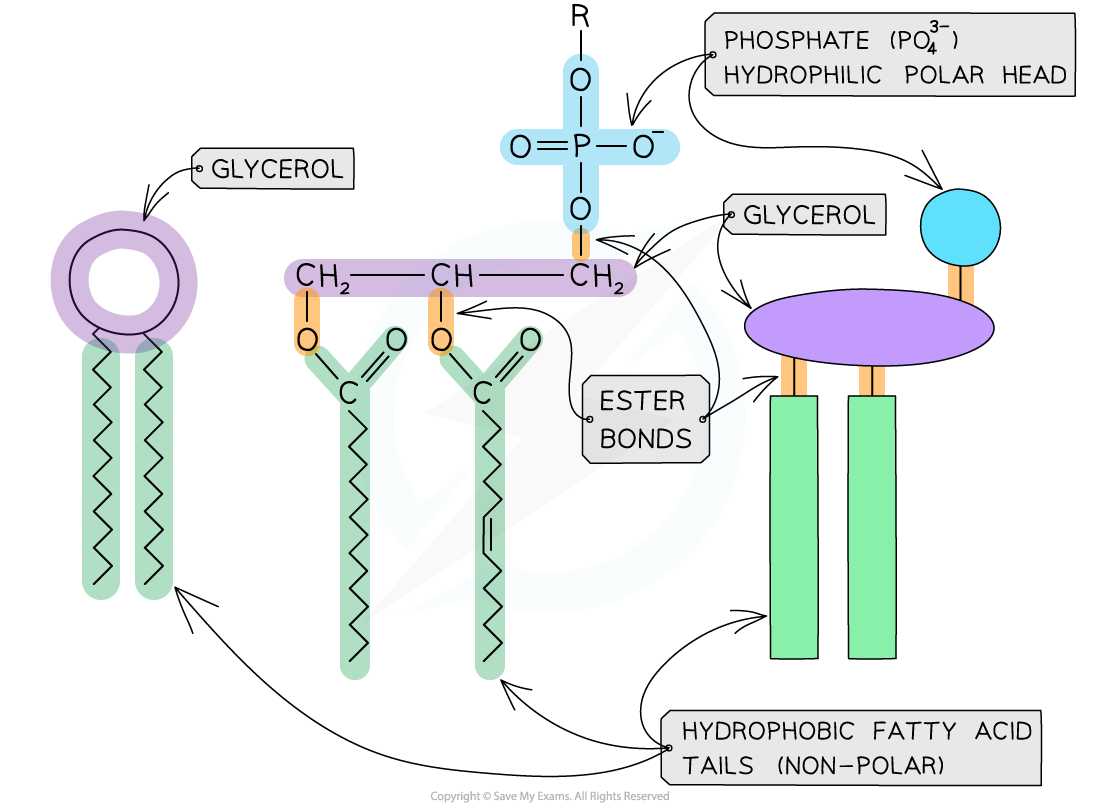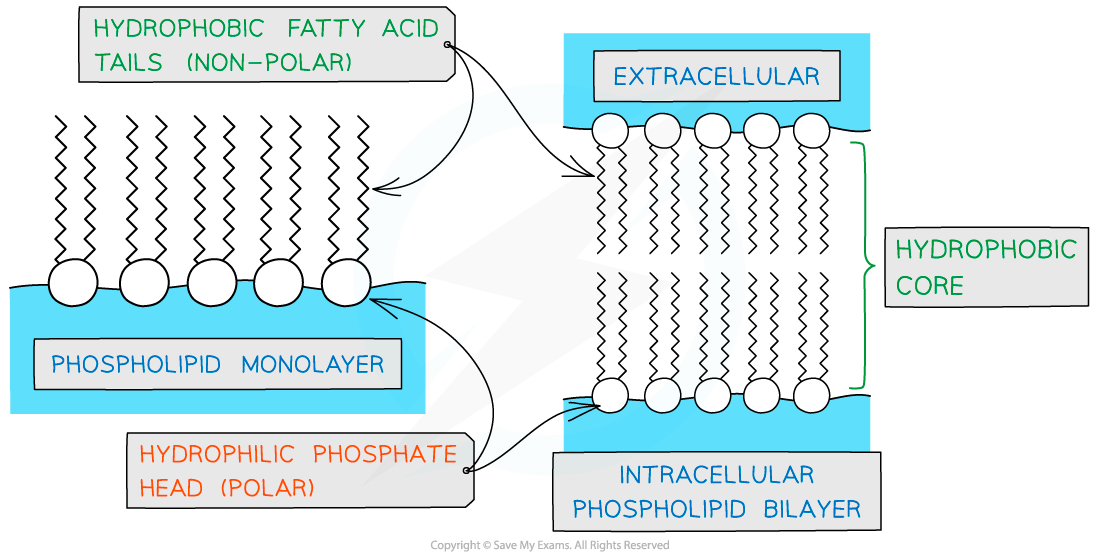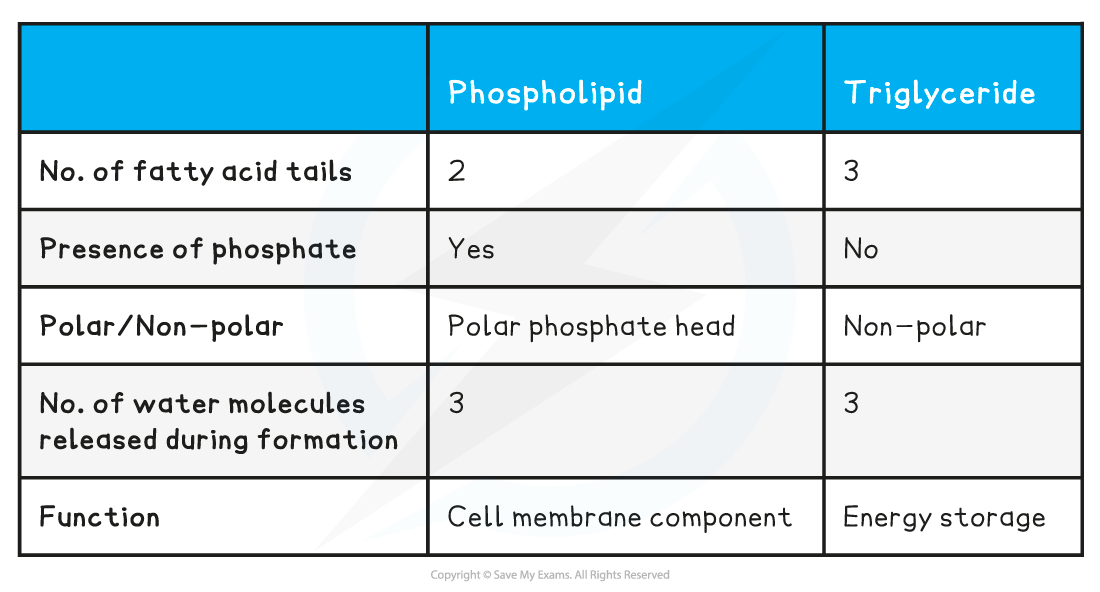The Vital Role of Phospholipids
Structure
- Phospholipids are a type of lipid, therefore they are formed from the monomer glycerol and fatty acids
- Unlike triglycerides, there are only two fatty acids bonded to a glycerol molecule in a phospholipid as one has been replaced by a phosphate ion (PO43-)
- As the phosphate is polar it is soluble in water (hydrophilic)
- The fatty acid ‘tails’ are non-polar and therefore insoluble in water (hydrophobic)

Phospholipids are the major components of cell surface membranes. They have fatty acid tails that are hydrophobic and a phosphate head, that is hydrophilic, attached to a glycerol molecule.
- Phospholipids are amphipathic (they have both hydrophobic and hydrophilic parts)
- As a result of having hydrophobic and hydrophilic parts phospholipid molecules form monolayers or bilayers in water

In the presence of water due to the hydrophobic and hydrophilic parts phospholipids will form monolayers or bilayers.
Role
- The main component (building block) of cell membranes
- Due to the presence of hydrophobic fatty acid tails, a hydrophobic core is created when a phospholipid bilayer forms
- This acts as a barrier to water-soluble molecules
- The hydrophilic phosphate heads form H-bonds with water allowing the cell membrane to be used to compartmentalise
- This enables the cells to organise specific roles into organelles helping with efficiency
- Composition of phospholipids contributes to the fluidity of the cell membrane
- If there are mainly saturated fatty acid tails then the membrane will be less fluid
- If there are mainly unsaturated fatty acid tails then the membrane will be more fluid
- Phospholipids control membrane protein orientation
- Weak hydrophobic interactions between the phospholipids and membrane proteins hold the proteins within the membrane but still allow movement within the layer
Phospholipids v Triglycerides Table










